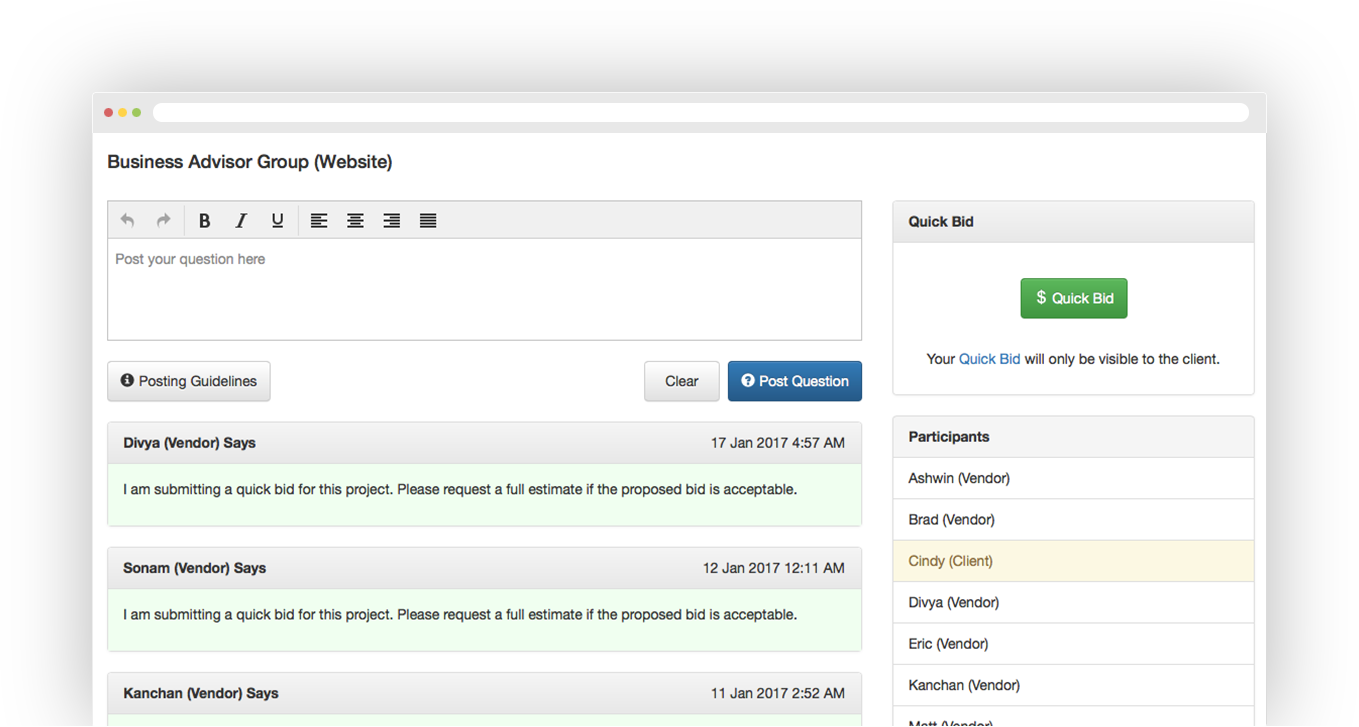Sending out a request for proposal and managing the communication and responses from multiple vendors is the most important step towards any project. The outcome of this process can decide the future of your project. The decision of selecting the right implementation partner should be based on facts, not feelings. Quick FPA estimates capture all the data that is necessary to evaluate a bidder's understanding of your project. The communication tools that enable the vendor communication allow you to respond to multiple vendor queries through one unified messaging channel implemented as a discussion forum.
The various steps involved in getting a well defined scope for
your software project can be summarized as follows
You post your project requirements in a format defined by the Quick FPA system, so all the vendors can receive the required information as expected.
You set the due date for receiving and responding to vendors' queries. You also set the due date for receiving the proposals.
Vendors post their questions in the discussion forum attached to your project and you can respond to multiple vendors at the same time.
Vendors prepare detailed estimates for your project by using Quick FPA's estimation tools and submit their estimates for your review.
You receive multiple estimates for your project in the same format that is easy to understand and compare.
After reviewing the estimates you can invite one or more vendors for an interview so you can ask the right questions and have them present their additional capabilities.
The biggest advantage of communicating with vendors during the RFP phase is that you will be able to see the project through their eyes and be forced to think about the aspects you did not think about. Different vendors will ask different questions and these questions will help you develop a clearer vision for your project. Quick FPA discussion forum bridges the gap between the technical community and the business community to produce an output that is understood by either side. The scope document which is an outcome of this process, provides the most comprehensive and well thought coverage leading to a successful implementation of the project.

The outcome of this RFP process is a well defined estimation document for your project. The document captures
all the setup, implementation and testing details in a structured format that is easy to understand.
The following sections describe the different types of information that you will be able to access through the document.
A brief overview of users, use cases, screens, test environments and different types of effort required to complete the project.
This section lists the various user roles and their descriptions that would have access to the various areas of the project.
This section displays the grouping of use cases by screens as viewed from the perspective of user inputs
This section lists the details of all the test environments for the project. Each test environment also displays the total testing effort required to make the project compatible with that environment.
This section describes the various aspects of project setup along with their associated effort estimate.
This section lists the various use cases for the project broken down by the effort required to validate, implement and test all the selected options for each use case.
This section displays the grouping of use cases by screens as viewed from the perspective of system outputs.